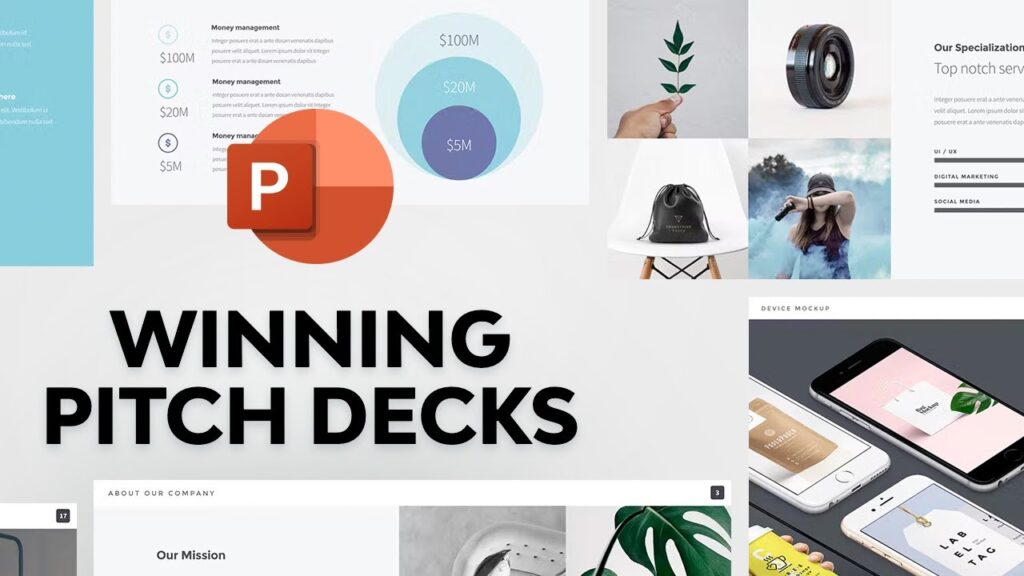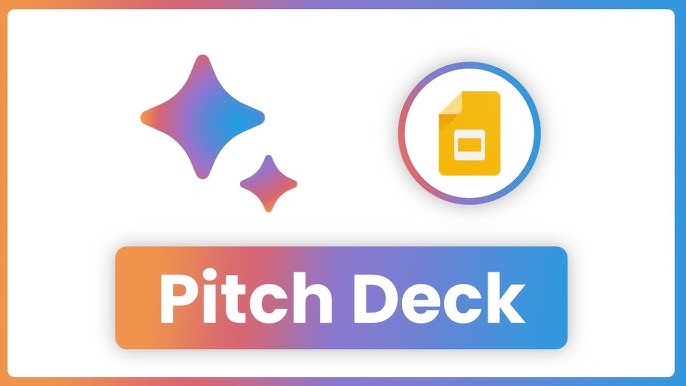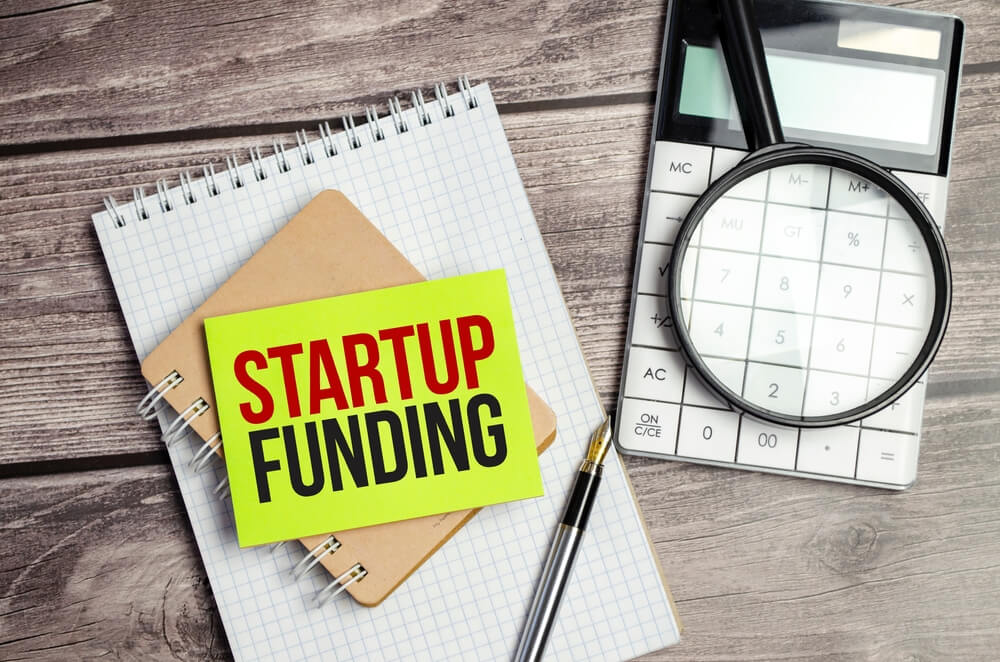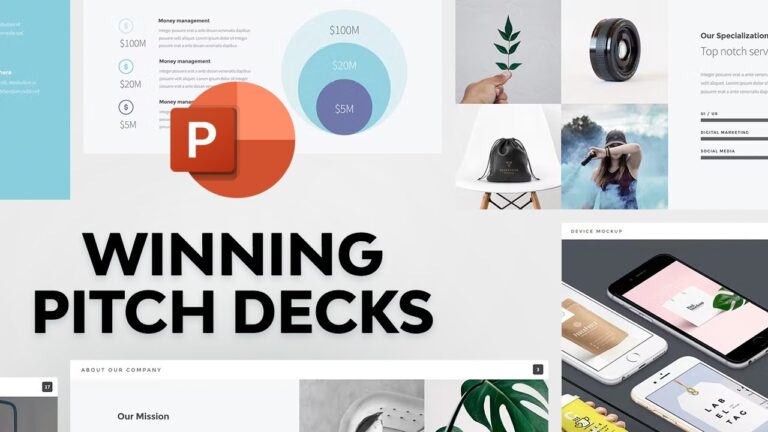Pitch decks are the handshake of your startup: you have only seconds to prove yourself. Investors spend an average of just 3 minutes and 44 seconds on a 19-slide deck. In that blink of an eye, every word and visual must count. Generic slide templates or freelancers might give you a pretty deck, but is it strategic?
Our pitch deck services challenge the usual gloss-over approach. Rather than cramming in every feature, we ask founders, “Does this slide answer an investor’s immediate question?” Our pitch deck design and pitch deck writing processes focus obsessively on substance.
Pitch deck companies often promote cool graphics or the latest buzzword structure (the so-called “narrative arc”) without question. Venture Care does the opposite. Founders justify every statement in their own words, aligning each slide with what a critical investor seeks. Investors are not paying you to read your life story or admire your logo; they want the investment thesis up front.
At Venture Care, we insist on leading with the problem and the market purpose, not the product. DocSend’s research shows that successful decks lead with why the company exists, while failed decks often embarrassingly begin with product features. Our “purpose-first” narrative circumvents this common trap: it hooks investors by framing the big why (“Why is this startup here, and why now?”) before diving into the what. This immediately addresses the silent question in every investor’s mind: “Why should I care?”
In practice, we work with you to craft an opening slide (and pitch) that clarifies the issue and opportunity. As one DocSend analysis emphasises, once that “why care” question enters an investor’s head, nothing else registers until it’s answered.
The Investor’s Blink-of-an-Eye Attention
Investors move fast. Data shows that across hundreds of pitches, VCs barely skim each deck. In other words, time is your scarcest resource. Many founders assume they can dazzle with complex slides, but research belies that. In DocSend’s study, decks averaged 19 slides, yet investors spent only 3:44. Even more revealing, those investors skipped the slides most founders care about: they spent the least time on “products” and “solutions” slides. This is no accident, showing that flashy product details without context simply don’t stick. Instead, investors focus on why the problem matters and whether the team is credible.
Venture Care internalises this. We design every slide to deliver one core message clearly and quickly, avoiding “slide bloat” or drowning viewers in minutiae. As one pitch coach puts it, your deck needs enough depth to engage yet be light enough to follow at a glance.
- Slide Bloat Startup teams often fall prey to the “curse of knowledge,” including every technical detail, in fear of missing something. We combat this by ruthlessly editing. MetaDeck calls it slide bloat: “an overabundance of slides, each laden with a plethora of technical minutiae,” which buries the actual narrative. We identify and remove these detours, ensuring each slide only contains what an outsider needs.
- Desert of Detail On the opposite extreme, some founders strip away too much, leaving a skeletal deck that says almost nothing. MetaDeck warns about the “desert of detail,” where founders think they’re being concise, leaving investors confused and sceptical. We guide you to the middle path: enough data and context to satisfy a curious VC, but no more than necessary.
- Misordered Narrativ. Even well-written decks can flop if the sequence is wrong. DocSend’s data confirms that “sequence matters” and that there is a right way to tell the story. We align your deck with proven structures (like the Sequoia template that starts broad and funnels to specifics). We make sure you answer the investor’s first questions (why now, why you) before the later ones (product details, financials).
- Style Over Substance Many pitch deck creators treat the process as an art project: they obsess over fonts and animations, then bolt on content at the last minute. Investors will thumb past a slick slide deck that doesn’t answer their core concerns. We flip this: we call our offerings “bespoke,” emphasising that every slide, word, and pixel is tailored to your unique story. Design is essential, but always in service of communication. We strive for “visual balance”, neither too busy nor too plain, so that the slide amplifies the point instead of distracting from it.
The Myth and Misapplication of Storytelling
“Storytelling” is the buzzword du jour for pitch decks, but it’s often misunderstood. Investors like a coherent narrative but care about how it advances their decision. Many founders assume “storytelling” means starting with a dramatic personal anecdote or a movie-like script. This can backfire. Investors are less interested in your six-year struggle (unless it ties directly to proving product/market fit) and more in the economic opportunity. Even DocSend’s research, which found storytelling matters, warns that storytelling must follow the proper structure.
Too many pitch deck companies spout vague advice like “use the hero’s journey,” and founders dutifully tell an emotional founder-origins tale. But the investor’s priority is ROI, risk, and scalability, not your backstory. A narrative mishap is often like a heartfelt “why we started this project” slide, followed by a generic pitch about the product, without the complex numbers or market context.
We challenge this trope. We help you construct a business narrative, not a memoir. Our Pitch Deck Story Creation service (as we call it) explicitly focuses on “the profound benefits of aligning with your vision” and “ignites curiosity and sparks action.” In other words, the story is built around the investor’s worldview, not just the founder’s.
We also apply classic storytelling rigour without the fluff. We incorporate narrative principles in a data-informed way. For example, DocSend notes that good storytelling has a clear beginning-middle-end structure, where the “why should I care” question is addressed early. We use this insight: your opening sets up the stakes (market problem, company purpose) and your middle raises those stakes (why you, why now, show traction), before closing with the logical conclusion (financials, ask).
We avoid the trap of “waxing poetically about your technology” before clarifying the context. Ultimately, we treat storytelling not as entertainment but as a persuasive framework that integrates evidence and emotion to build investor confidence.
Psychology Over Presentation: What Investors Want
A pitch deck isn’t an academic paper or a personal diary; it’s a persuasive instrument. Competent pitch deck experts know that investors are not purely rational calculators; they are people with biases, heuristics, and emotions. According to persuasion research, the goal is to build confidence, not just flood someone with bullet points. As one investor-pitch psychologist notes, “Investing isn’t about proving outcomes in advance; it’s about instilling confidence in the decision you are asking them to make.”
We at Venture Care embrace this psychology. We don’t assume our clients’ decks will be read line-by-line; we know investors peek for triggers like credibility, momentum, and defensibility. So, one of our decks might sprinkle in social proof or comparative charts compellingly, or highlight the founder’s track record to establish credibility immediately (a principle of reciprocity and authority in one). At the same time, we minimise cognitive load: information is chunked into visuals or simple graphics so that the brain doesn’t overload (cognitive ease is key). We also use narrative cues to make slides memorable, not in a cheesy “once upon a time” way, but by connecting each slide to an intuitive question (“This tells me you understand the customer, because…”).
Crucially, we test our assumptions. We often ask founders to practice pitches or get mentor feedback, ensuring no slide takes an unexpected turn. We anticipate objections: we can back a deck with data or customer quotes if it claims massive growth. We even think about emotional states: if a slide exposes a considerable risk, we might follow it immediately with the mitigation to avoid panic. This deep attention to investor psychology, far beyond layout, makes us pitch deck experts, not just graphic designers.
Venture Care’s Evidence-Based Pitch Deck Strategy
Venture Care combines several elements into a unified process. Here’s how their bespoke method contrasts with one-off hacks:
- Bespoke Design and Copy
As we put it, “Say goodbye to cookie-cutter decks. Our pitch deck design services are bespoke. Every slide, word, and pixel is tailored to your unique story.” This isn’t marketing fluff. We don’t start with a stock template or generic icons; we craft entirely new visuals aligned with your brand and message.
Meanwhile, our pitch deck writing team avoids jargon and filler. We promise to “go beyond just filling your pitch deck with fancy jargon and tedious text blocks,” instead delivering “engaging, concise, and impactful content that truly converts.” In practice, bullet points become crisp headlines, paragraphs become infographics, and every sentence answers the investor’s key question: “Why does this matter?”
- Data-Driven Research
Unlike designers who might guess at your market size or throw in filler graphs, we dive deep into your market. Our approach is rooted in what we call “Data-Driven Excellence.” As we say, “We’re not about guesswork; we’re about precision. Our team dives deep into research, dissecting market trends, analysing competitors, and uncovering golden nuggets.”
The result is a pitch deck that doesn’t just “impress” but “converts.” We build trust through evidence. Rather than vaguely asserting an addressable market, we back up your claims with sourced statistics and a clearly explained TAM/SAM/SOM breakdown. Crucially, we weave this data into your overall narrative; it’s not tacked onto a slide as an afterthought. This way, we directly address investors’ questions and signal that your startup is prepared.
- Iterative Story Refinement
You don’t get a one-off draft from us; you get a partner. We assign a dedicated consultant to work with you at each step. Our process is collaborative; we don’t assume one version is enough. After the first draft, we scrutinise every detail.
We’ll challenge your choices: “Why is this metric relevant?” “Could we swap this chart for something clearer?” “Does this slide add value or distract from your key narrative?” This iterative refinement loop is the opposite of a freelancer’s hand-off approach. It ensures your final pitch deck is logically coherent and strategically sharpened for persuasion.
Before we call a deck done, we double-check that no key investor concern is left unanswered: “Why now? Why us? Why this amount?” If any of these aren’t addressed clearly, we develop the missing story points and integrate them seamlessly.
- Rapid Turnaround, Professional Rigour
We know how fast things move for founders. That’s why we commit to fast delivery, “Lightning fast,” when needed, without cutting corners. This speed is possible because we’ve operationalised our internal systems. Our decks look as refined as a McKinsey or BCG presentation, but are created with startup-level agility.
You don’t get a final file or “good luck.” We offer multiple rounds of feedback and refinements. The result? A pitch deck that feels hand-crafted, not recycled, and thoroughly professional.
- Balanced Presentation
No slide should derail your pitch. We ensure every element in your deck carries its weight; nothing is moss. Research from DocSend shows that successful decks don’t have slides that dominate investor attention. We take that insight seriously.
Before finalising, we test how the narrative flows in practice. If any slide causes investors to fixate or stumble during rehearsal, we revise it. The goal is to maintain a forward momentum story that keeps the investor saying, “Okay, tell me more,” rather than drifting into confusion or disengagement.
Beyond Templates: Comparing Alternatives
It’s worth comparing Venture Care’s method to other common approaches. This highlights why so many startup founders end up with mediocre decks if they’re not careful:
- DIY Slides & Templates (Canva, Slidebean, PowerPoint Kit)
These tools boast “professional templates” for pitch decks. They look polished, but they are one-size-fits-all. Your startup is unique; your narrative must be too. A Canva deck often has generic icons and stock photos, but no thought to pacing or persuasion. It might feel like a pitch deck, yet it typically fails to challenge assumptions or highlight investor concerns.
We do the opposite: no graphics are used unless they reinforce your specific points (e.g., a custom growth chart, not a clip-art graph). Every element is intentional and rooted in your unique business context. Our decks are tailored to articulate your message, shape investor perceptions, and address their unspoken questions.
- Cheap Freelancers (Fiverr, Upwork)
Hiring a freelancer who “does pitch decks” for $50 is tempting. Often, that person is a graphics designer, not a startup strategist. They might deliver decent visuals, but they rarely question your content. Worse, they may not have seen many funded decks, so they default to clichés (like overusing “blurbs of Lorem ipsum” text).
Those decks frequently miss the mark because the designer never had access to the startup’s raw thinking or investor feedback. We, by contrast, only take on projects through a consultative process. Our deliverable is not just slides but analysis: we advise what to say, where to emphasise traction, and even which slide might be omitted. This makes us genuine pitch deck experts, not just pitch deck creators.
- Traditional Design Agencies
Some founders go to boutique consultancies or agencies that do corporate presentations. These firms can produce sharp visuals but often treat the pitch deck like any marketing brochure. They might include too much branding fluff or too many “strategic” buzzwords. Also, high-cost agencies usually have rigid processes that don’t align with a startup’s needs; they may not loop in the founder until late.
Our pitch deck service is more specialised: we combine startup know-how (we brag about mentoring companies at formation) with investor insight. We guide entrepreneurs throughout the process and tailor solutions without upselling unnecessary extras.
- Slide Deck Companies
Others have similar promises, but most miss at least one aspect. Some focus only on design (they’ll be great at aesthetics but poor at narrative). Others are only on content (pitch deck writing) but rely on your fonts.
Our all-in-one approach, design, writing, story, and research sets us apart. For example, our 18-slide package explicitly bundles award-winning slide design, expert copywriting, in-depth market research, and a personal consultant. Few competitors offer that many layers of service in one package. You’re effectively getting a mini-startup team (graphic designer + analyst + storyteller) rather than a single “graphic whiz.”
In simple terms, Venture Care treats a pitch deck as a startup’s strategic bible, not just a pretty brochure. They plug into the psychology of pitching and have the chops to execute it.
Tailored Pitch Decks by Funding Stage
Seed Stage
Seed-stage investors back vision and team over details. Venture Care’s seed decks tell a concise story of the problem and solution while highlighting the founders’ expertise. We use clean visuals (like product mockups or storyboards) to illustrate the concept without overloading slides. High-level metrics (total addressable market, user/revenue projections) hint at growth potential while avoiding complex forecasts.
- Narrative: Emphasise your vision and problem-solving story (seed investors invest in people and ideas, not exhaustive data).
- Visuals: Use simple, impactful graphics (e.g. mockups or diagrams) that clarify the concept and engage the audience.
- Metrics: Include only high-level estimates (market size, user/revenue forecasts) to show potential growth.
Team: Highlight the founding members’ background and relevant experience to build credibility.
Series A Stage
At Series A, investors expect validation beyond the idea. Venture Care’s Series A decks focus on product development, early traction and market fit. We highlight real progress (user growth, revenue, pilot customers) and reinforce the business model. Charts and timelines illustrate milestones and product evolution.
- Value Proposition: Showcase a solution that fits the market (investors want evidence of demand via user data or customer quotes).
- Traction: Highlight concrete results (e.g. user or revenue growth charts) to prove the business is working.
- Visuals: To make the data easy to grasp, use clean graphs or diagrams (growth curves, roadmaps).
Metrics: Present key KPIs (revenue figures, user/customer counts, burn rate, CAC/LTV) to give investors tangible proof of early success.
Series B+ Stage
Investors demand proof of scale and profitability by Series B and later rounds. Venture Care’s Series B+ decks showcase significant milestones, a clear scaling strategy, and detailed financials. We include polished charts (revenue forecasts, burn-rate, and break-even analyses) highlighting significant partnerships or key customers. The narrative emphasises sustainable growth and market leadership.
- Growth Strategy: Outline expansion plans (new markets, product lines, significant partnerships) and highlight achieved milestones to demonstrate momentum.
- Financials: Include detailed charts (projected revenue, unit economics, break-even timeline) to prove the business model’s robustness.
- Visuals: Use polished infographics (financial dashboards, customer funnel graphs) to convey scale and opportunity.
Metrics: Feature growth KPIs (customer retention, expansion revenue, lifetime value) that signal a proven, repeatable model.
Why Tailored Decks Matter
Tailoring your deck to each funding stage aligns with what investors expect. Venture Care’s expertise ensures each presentation hits the proper focus: vision and team at Seed, product-market fit and traction at Series A, and scale with solid unit economics at Series B+. This stage-specific approach boosts credibility and maximises funding success for startups.
Conclusion: Think Like an Investor
Building a pitch deck is a mental workout, not a creative vacation. Every slide should carry a heavy cognitive weight: solve a doubt, prove a point, or compel action. As venture professionals say, the deck should answer “why this venture, why now, and why this team.” Skip rehearsing flashy animation and instead ask yourself those questions slide by slide.
Our approach embodies this disciplined mindset. We remind founders not to take advice at face value. It’s not enough to “just tell a story” or “keep it simple.” You must question which story and which simplicity. Are you honestly saying something new about the market? Does each statistic serve the thesis? Are you anticipating the investor’s real concerns? The best pitch deck designers force you to answer these with rigour.
A Venture Caredesigned deck is effective not because it looks like a movie but because it reads like an investor memo: clear, compelling, and grounded. It builds on the interplay of data and narrative, design and psychology. That level of thoroughness can be the difference between “just another pitch deck” and the one that earns a follow-up meeting.
In fundraising, every slide is on trial. Don’t let yours speak for itself without a lawyer. Apply that sceptical, analytic lens, and only then hire a pitch deck expert who will build on it. As MetaDeck summarised, amidst endless slides, the message that “shines through without a need for a magnifying glass” is the one that wins. Venture Care’s model is designed to achieve precisely that clarity, but the real point is, you should always demand it.










